CAA News Today
Elia Alba and Postcommodity to Participate in Annual Artists’ Interviews at CAA’s 111th Annual Conference
posted by CAA — January 19, 2023
CAA is pleased to announce that this year’s Annual Artists’ Interviews will feature Elia Alba and Postcommodity!
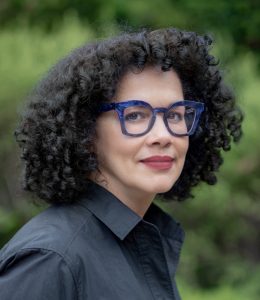
Photo: Michael Palma Mir
Elia Alba was born in Brooklyn to parents who immigrated from the Dominican Republic in the 1950s. She is a multidisciplinary artist whose artistic practice is concerned with the social and political complexity of race, identity, and the collective community. She received her Bachelor of Arts degree from Hunter College in 1994 and completed the Whitney Independent Study Program in 2001. She has exhibited throughout the United States and abroad, including at the Studio Museum in Harlem, El Museo del Barrio, Stedelijk Museum, Amsterdam, Science Museum, London, Smithsonian Museum of Art, National Museum of Art, and Reina Sofía, Madrid. Awards include the Studio Museum in Harlem Artist-in-Residence Program in 1999; Pollock-Krasner Foundation Grant in 2002; Joan Mitchell Foundation Grant in 2002 and 2008; Anonymous Was a Woman Award in 2019; and Latinx Artist Fellowship in 2021. Her work is in the collections of the Smithsonian Museum of Art, El Museo del Barrio, and Lowe Art Museum. Her work has been reviewed in The New York Times, Artforum, ArtNews, and Forbes, among others. Her book, Elia Alba, The Supper Club (2019) brings together artists, scholars, and performers of diasporic cultures through photography, food, and dialogue to examine race and culture in the United States. She was part of the curatorial team for El Museo del Barrio’s critically acclaimed exhibition, Estamos Bien: La Trienal 20/21. She lives and works in the Bronx.
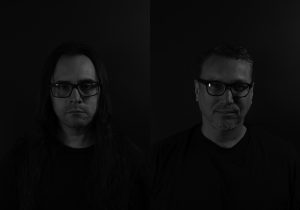
Postcommodity is an interdisciplinary art collective comprised of Cristóbal Martínez (Mestizo), and Kade L. Twist (Cherokee). Postcommodity’s art functions as a shared Indigenous lens and voice to engage the assaultive manifestations of the global market and its supporting institutions, public perceptions, beliefs, and individual actions that comprise the ever-expanding, multinational, multiracial, and multiethnic colonizing force that is defining the twenty-first century through ever-increasing velocities and complex forms of violence. Postcommodity works to forge new metaphors capable of rationalizing our shared experiences within this increasingly challenging contemporary environment; promote a constructive discourse that challenges the social, political, and economic processes that are destabilizing communities and geographies; and connect Indigenous narratives of cultural self-determination with the broader public sphere.
Postcommodity are the recipients of grants from the Joan Mitchell Foundation (2010), Creative Capital (2012), Art Matters (2013), Native Arts and Cultures Foundation (2014), Mid Atlantic Arts Foundation (2017), Ford Foundation Art of Change Fellowship (2017–18), Harker Fund of the San Francisco Foundation (2018–19), Native Arts and Cultures Foundation Shift Award (2021), and Hewlett 50 Arts Commissions (2022). The collective has been exhibited nationally and internationally, including at Contour: 5th Biennial of the Moving Image, Mechelen, Belgium; Nuit Blanche, Toronto; Adelaide International 2012, Adelaide, Australia; 18th Biennale of Sydney, Sydney; Scottsdale Museum of Contemporary Art; 2017 Whitney Biennial; Art in General, New York; documenta 14; 57th Carnegie International, Pittsburgh; Desert X, Coachella Valley, CA; Art Institute of Chicago; LAXART, Los Angeles; Minneapolis Institute of Art; Remai Modern Museum, Saskatoon, Canada. Their historic Land Art installation Repellent Fence occurred at the US/Mexico border near Douglas, Arizona and Agua Prieta, Sonora, Mexico. The collective was awarded the Fine Prize for From Smoke and Tangled Waters, They Carried Fire Home, commissioned for the 57th Carnegie International.
Postcommodity acknowledges the important contributions of its previous collaborators: Steven Yazzie (2007–2010), Nathan Young (2007–2015), Raven Chacon (2009–2018), Adam Ingram-Goble (Game Remains), Andrew McCord (If History Moves at the Speed of Its Weapons, Then the Shape of the Arrow is Changing, and Promoting a More Just, Verdant and Harmonious Resolution), Annabel Wong (Dead River) and Existence AD (Dead River).
CAA’s Annual Artist Interviews will be held on Friday, February 17, 4:30–7 p.m. ET, in Grand Ballroom East.
The 111th CAA Annual Conference will be held February 15–18, 2023 at the New York Hilton Midtown. Register now!
CAA Issues Statement On Hamline University Termination of Dr. Erika López Prater
posted by CAA — January 18, 2023
CAA has been following the termination of Professor Erika López Prater at Hamline University. As of last Friday, the Board of Trustees at the university has been engaged in a review of institutional policies, including those focused on academic freedom and inclusion. CAA strongly urges the Board and the administration to uphold the tenets of academic freedom with respect to Dr. López Prater for their public statements that have defamed and damaged her person and her professional reputation.
Academic freedom is a core principle of both Hamline University’s mission and CAA’s charter, and Dr. López Prater’s termination is a tacit rejection of everything that principle stands for in higher education. Beyond an infringement on academic freedom, Hamline’s actions are a dangerous precedent of academic administrators endorsing one side of a religious controversy.
Hamline University’s characterization of Dr. López Prater’s action as “Islamophobic” contradicts widely held definitions of the term from prominent public interest advocacy groups, including the national organizations CAIR (Council on American-Islamic Relations), and MPAC (Muslim Public Affairs Council). Dr. López Prater met and exceeded pedagogical standards for teaching by providing advance written and verbal notice of the intention to illustrate her lecture with two images of the Prophet Muhammed. Additionally, the images she used are historic and symbolic works of art of significance, essential to teaching the long and rich art history of Islam.
CAA calls upon Hamline University, President Fayneese Miller, and AVP David Everett to apologize to Dr. López Prater formally and publicly. Furthermore, this would be the appropriate time to affirm their commitment to both the informed pedagogy that Dr. López Prater demonstrated, and the academic freedom to pursue truth that all professors should expect. CAA speaks on behalf of a membership base that is facing increasingly precarious standards of employment—which is the very reason Hamline University was so easily able to terminate Dr. López Prater. Amends would be made if they recommitted to a tenure-line position for the teaching of art history.
Additional Signatories:
American Sociological Association
Other Statements of Support:
Academic Freedom Alliance (AFA)
Mesa (Middle Eastern Studies Association)
Michael S. Roth, President of Wesleyan University, to give keynote address at CAA’s 111th Annual Conference Convocation
posted by CAA — January 17, 2023

Michael S. Roth, President of Wesleyan University.
We are thrilled to announce that Michael S. Roth, President of Wesleyan University, will give the keynote address at CAA’s Convocation during the organization’s 111th Annual Conference.
Michael S. Roth ’78 became the sixteenth president of Wesleyan University in 2007, after having served as Hartley Burr Alexander Professor of Humanities at Scripps College, Associate Director of the Getty Research Institute, and President of the California College of the Arts. At Wesleyan, Roth has overseen the launch of such academic programs as the Allbritton Center for the Study of Public Life and the Shapiro Center for Writing as well as four new interdisciplinary colleges that emphasize advanced research and cohort building in the areas of the environment, film, East Asian studies, and integrative sciences. Under his leadership, Wesleyan experienced its most ambitious fundraising campaign in its history, raising more than $482 million, primarily for financial aid. Roth has undertaken several initiatives that have energized the curriculum and helped to make a Wesleyan education more affordable and accessible to students from under-represented groups, creating a supportive and diverse campus community that inspires students to achieve their personal best.
Author and curator (most notably of the exhibition Sigmund Freud: Conflict and Culture, Library of Congress, 1998–99), Roth describes his scholarly interests as centered on “how people make sense of the past.” His 2015 book Beyond the University: Why Liberal Education Matters (Yale University Press) has been a powerful tool for students, their families, faculty, and policymakers who are wrestling with the future of higher education in America. It was recognized in 2016 with the American Association of Colleges and Universities’ Frederic W. Ness award for a book that best illuminates the goals and practices of a contemporary liberal education. Roth’s newest book, Safe Enough Spaces: A Pragmatist’s Approach to Inclusion, Free Speech, and Political Correctness (Yale University Press), addresses some of the most contentious issues in American higher education, including affirmative action, safe spaces, and questions of free speech. Roth regularly publishes essays, book reviews, and commentaries in the national media and in scholarly journals. He continues to teach undergraduate courses and has offered MOOCs through Coursera, most recently, “How to Change the World.”
CAA’s Convocation will be held on Wednesday, February 15, 6:30–8 p.m. ET, in Grand Ballroom East.
The CAA 111th Annual Conference will be held February 16–18, 2023 at the New York Hilton Midtown. Register now!
CWA Picks: Winter 2023
posted by CAA — January 12, 2023
The CAA Committee on Women in the Arts (CWA) Winter Picks include exhibitions and events that explore language through form, abstraction, the archive, and narrative. The artists included in this season’s picks investigate language and how it shapes our vision and experience of the world. They also reveal the systems of power embedded within language and how it often acts as a mediator.
Put It This Way: (Re)Visions of the Hirshhorn Collection
Hirshhorn Museum and Sculpture Garden
Until August 31, 2023
Put It This Way includes almost a century of work from fifty women and nonbinary artists in the Hirshhorn’s collection. The exhibit presents a range of media from the twentieth and twenty-first centuries, with a particular emphasis on the Hirshhorn’s mission to highlight global voices.
Caroline Kent
Until January 28, 2023
Figge Art Museum
Language and invented vocabulary made up of geometric shapes, marks, and colors are central to Caroline Kent’s practice. Her work challenges the viewer to consider how the indecipherable might play a role in their understanding of the world.
The Age of Roe: The Past, Present, and Future of Abortion in America
Until March 4, 2023
Conference: “The Age of Roe: The Past, Present, and Future of Abortion in America”
Friday January 27, 2023
This two-day conference at Harvard Radcliffe Institute will explore how Roe v. Wade and its aftermath shaped the United States and the world beyond it for nearly half a century. The conference will include lectures and panel discussions from experts in constitutional law, historians, health policy advocates, and other scholars. An accompanying exhibition curated by Mary Ziegler, Martin Luther King Jr. Professor of Law, UC Davis School of Law, will also be on view through March 4, 2023.
Until April 23, 2023
re:collection includes the work of five artists—Ali Cherri, Nicole Cherubini, Lily Cox-Richard, NIC Kay, and SANGREE—whose work reconsiders the Tufts University collection. Specifically, the artists explored about 200 objects from the fifth century BCE to the seventh century CE, including early Greco-Roman ceramics, stone carvings, pre-Columbian vessels, jewelry, and textiles. The exhibition has a range of approaches, from performance and installation to sculpture and painting.
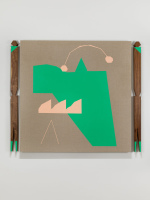
Valiant postures/A ruse! A ruse!
2021
Acrylic on Belgian linen, acrylic on walnut
63 × 74 × 2 1/2 in
CAA 2023 Board of Directors Election: Vote Now!
posted by CAA — December 22, 2022
As a CAA member, voting is the best way to shape the future of your professional organization. Thank you for taking the time to vote!
The CAA Board of Directors is comprised of professionals in the visual arts who are elected annually by the membership to serve four-year terms (or, in the case of Emerging Professional Board members, two-year terms). The Board is charged with CAA’s long-term financial stability and strategic direction; it is also the Association’s governing body. The board sets policy regarding all aspects of CAA’s activities, including publishing, the Annual Conference, awards and fellowships, advocacy, and committee procedures. For more information, please read the CAA By-laws on Nominations, Elections, and Appointments.
MEET THE CANDIDATES
The 2022–23 Nominating Committee has selected the following candidates for election to the CAA Board of Directors. Click the names of the candidates below to read their bios/personal statements and CVs before casting your vote.
BOARD OF DIRECTORS CANDIDATES (FOUR-YEAR TERM, 2023–2027)
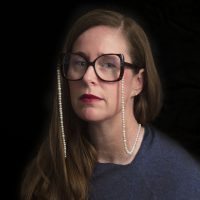
Associate Dean of Academic and Student Affairs, College of Visual Arts and Design
University of North Texas (Denton, TX)
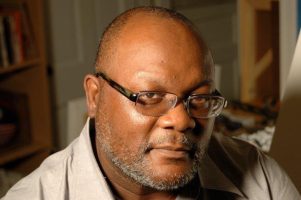
Associate Professor of Painting, Department of Art
Mississippi State University (Starkville, MS)

Associate Professor & Director of Art History
VCUarts Qatar (Doha, Qatar)

Curator of exhibition Lucio Fontana’s Ceramics,
Peggy Guggenheim Collection (Milan, Italy)
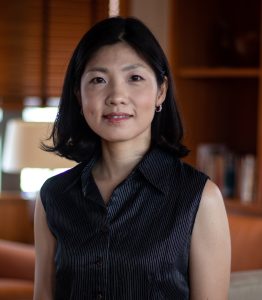
Associate Professor of Art History & Head of Arts & Humanities Major
Yale-NUS College (Singapore)
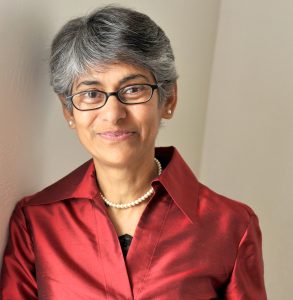
Associate Professor in Visual Communication Design, Department of Art, Art History & Design
University of Notre Dame (Notre Dame, IN)
EMERGING PROFESSIONALS BOARD OF DIRECTORS CANDIDATES (TWO-YEAR TERM, 2023–2025)

PhD Candidate, David Driskell Fellow
Institute for Doctoral Studies in the Visual Arts (Portland, ME)
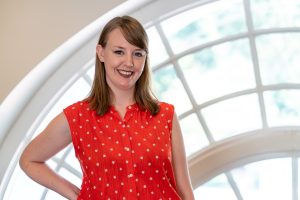
Ph.D. Candidate, Art and Architectural History
University of Virginia (Charlottesville, VA)
CAA members must cast their votes online. The deadline for voting is 5 p.m. ET on Thursday, February 16, 2023.
The elected individuals will be announced at CAA’s Annual Business Meeting to be held from 1–2 p.m. ET on Friday, February 17, 2023.
Questions? Contact Maeghan Donohue, Chief of Staff and Manager, Strategic Planning, Diversity & Governance (mdonohue@collegeart.org).
Notice of CAA 111th Annual Business Meeting
posted by CAA — December 16, 2022
CAA Annual Business Meeting
Friday, February 17, 2023
1 p.m. ET
The 111th Annual Business Meeting of the members of the College Art Association will be called to order at 1 p.m. ET on Friday, February 17 at the 2023 Annual Conference at the New York Hilton Midtown. Access to this meeting is included in paid registration and can also be accessed by registering for no-cost registration. Once you have registered, please log into the online conference schedule to attend the meeting. CAA President, Jennifer Rissler will preside.
Agenda
- Welcome + Call to Order – Jennifer Rissler, CAA President
- Executive Director’s Report – Meme Omogbai, CAA Executive Director + CEO
- Approval of 110th Annual Business Meeting Minutes [ACTION ITEM]
- Financial Report
- Old/New Business
- Board Member Election Results – Jennifer Rissler, CAA President
- Adjourn
Board Voting
The 2023 Board of Directors slate will be announced on December 22, 2022 along with an online voting form. Please submit your vote for this election cycle via the online voting form no later than 5 p.m. ET on Thursday, February 16th, 2023.
Next Meeting – 2024
The 112th Annual Business Meeting of the College Art Association will be held in Chicago in 2024, precise date to be announced.
CAA 110th Annual Business Meeting Minutes
posted by CAA — December 16, 2022
CAA Annual Business Meeting Minutes
Friday, February 18, 2022
- Welcome + Call to Order – N. Elizabeth Schlatter, CAA President
- N. Elizabeth Schlatter called the meeting to order at 1:05 p.m. CT.
- Land acknowledgements.
- Thanks paid to staff for their hard work bringing the 2022 Annual Conference to fruition.
- Executive Director’s Report – Meme Omogbai, CAA Executive Director + CEO
- Meme Omogbai welcomed everyone to the 110th Annual Business Meeting and expressed regrets that this could not be an in-person convening as the pandemic necessitated a pivot to virtual meeting.
- CAA staff remains focused on meeting commitments to members, based on quantitative and qualitative analysis, surveys and other feedbacks consistent with the fundamentals of our strategic repositioning plan.
- CAA’s aim for the 2022 Annual Conference was to create a smaller, more digestible program of 200 vetted and guaranteed sessions in two components, in-person in February and virtual in March, based upon membership feedback.
- Throughout the pandemic, the health and safety of members has been CAA’s primary concern. Based on the information and the feedback received from members, specifically concerns about an in-person convening, and close monitoring of the COVID pandemic and omicron strain as well as CDC guidelines, it was decided that the CAA 2022 Annual Conference would pivot to an entirely virtual format while also maintaining the scheduled dates: February 16-19 and March 3-5, with all recordings available through April 14.
- It is important to note that during the decision-making process, while the Hilton Chicago remained open, CAA 2022 registration statistics were drastically below what was needed to fulfill the negotiated room block contractual obligations and registration goals.
- The pivot to virtual has provided increased access to virtual content, allowing conference attendance to expand and embrace a global audience. In this flexible and accessible format, individuals can hear session content on their own schedule between teaching, family care, and other obligations, including acknowledgement of the climate crisis.
- Pricing was also adjusted for virtual access. Everyone registered for all access/in-person was automatically converted to virtual from a rate of $249 to $199 and directed back to portal for self-service options: 1) credit $50 to the next membership renewal; 2) $50 tax deductible donation to CAA; or 3) refund of $50.
- This year’s pivot exemplifies our model of constant learning and improvement where we adjust our plans based on feedback and data received. This is just the beginning; as we continue with our repositioning, we will be able to improve our responsiveness and agility in the process of supporting CAA members.
- Approval of Minutes of 109th Annual Business Meeting [ACTION ITEM]
- Jennifer Rissler, CAA VP for External Relations, moved to approve the 109th Annual Business Meeting minutes. Niku Kashef, CAA VP for Diversity & Inclusion, seconded the motion.
- 81% of attendees (25 people) voted to approve; 19% of attendees (6 people) abstained. The minutes were approved.
- Financial Report – Georgia Harrell, CAA Treasurer + Robert Tofolo, CAA Head of Operations
-
- As of June 30, 2021, the association posted a breakeven operating budget with revenue including investment spinoff matching expenses and meeting our forecasts and budget expectations. The association continues to manage expenses within revenue means. Operating revenue totaled $3,001,778 verses prior year $3,321,000.
- Excerpts of the audited financial statements for fiscal year 2021 will be posted on the Association’s website. Complete audited financial statements have been provided and made available via guidestar.org and charitiesnys.com.
- In March of 2021, the association received a second payroll protection loan of $352,195 as part of the national CARES Act. This loan was fully forgiven in February 2022.
- As of June 30, 2021, there were 6,095 individual members down 9% from 6,699 prior year; this is reflective of continued systemic and pandemic impacts. There were also 367 institutional members versus prior year numbers of 443.
- The market value of the association’s investment portfolio as of June 30 was $11,946,566 versus a prior year balance of 9,825,458 million. The portfolio continues to be managed by investment managers at Boston Trust, now named Boston Trust Walden Company, under the supervision of the finance committee of the CAA Board of Directors.Georgia Harrell presented the financial report for the fiscal year ending June 30, 2021.
- Robert Tofolo presented an update on conference attendance and CAA’s strategic plan.
- As of today, February 18, 2022, 2038 attendees have registered for the 2022 conference. We will provide a final tally for attendance after March 5, 2022.
- In 2020, CAA implemented a five-year strategic plan to create a sustainable business model that can support operations and allow for endowment growth through responsible and streamlined operations. Although we are now operating within our means, we know that membership dues no longer support the operations of the association: combined revenues of dues, Annual Conference, and publications in fiscal 2021 only covered 63% of our operating expenses.
- In response to this, we are working to redesign our membership tiers in order to provide an accessible entry point to CAA.
- In November 2021 we introduced a new user portal which will function as a central nervous system for the member experience, enabling a unique “myCAA” experience tailored to each individual’s member journey.
-
- Old/New Business
- No old/new business was raised.
- Board Member Election Results – N. Elizabeth Schlatter, CAA President
- Gregory Gilbert, Nazar Kozak, Karen Leader, and Adity Saxena were elected to serve a four-year term on the Board of Directors, beginning in May 2022.
- Victoria McCraven was elected as an Emerging Professional Board member and will serve a two-year term.
- Adjourn
Respectfully submitted by Maeghan Donohue, CAA Manager of Strategic Planning, Diversity, and Governance.
Now Accepting Applications for the Art History Fund for Travel To Special Exhibitions
posted by CAA — December 06, 2022
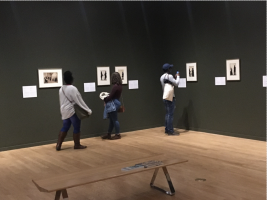
Students from Rachel Stephens’ seminar on American portraiture at the University of Alabama visiting the Birmingham Museum of Art to view the exhibition, “Black Out: Silhouettes Then and Now” in 2019.
In fall 2018, we announced CAA had received an anonymous gift of $1 million to fund travel for art history faculty and their students to special exhibitions related to their classwork. The generous gift established the Art History Fund for Travel to Special Exhibitions. We are happy to accept new applications again for this upcoming year.
The fund is designed to award up to $10,000 to qualifying undergraduate and graduate art history classes to cover students’ and instructors’ costs (travel, accommodations, and admissions fees) associated with attending museum special exhibitions throughout the United States and worldwide. The purpose of the grants is to enhance students’ first-hand knowledge of original works of art. Interested members can also see recent awardees share their experiences at the session at the CAA Annual Conference at the session Art History Fund for Travel to Special Exhibitions: Sharing Stories.
Applications are due by January 15, 2023.
Meet the 2022 Wyeth Award Winners
posted by CAA — November 30, 2022
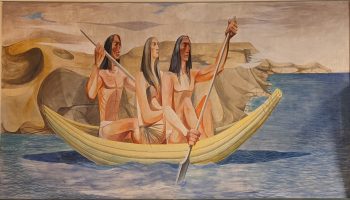
Anton Refregier, History of San Francisco, 1941-1948, mural, panel 2: “Indians by the Golden Gate,” Rincon Center, San Francisco, California, public domain
Since 2005, the Wyeth Foundation for American Art has supported the publication of books on American art through the Wyeth Foundation for American Art Publication Grant, administered by CAA. The 2022 grantees are:
- Siobhan Angus, Camera Geologica: Temporality, Materiality, and Mining in Climate Breakdown, Duke University Press
- Julia Bailey, Painting and Paranoia: The Specter of Communist Art in Cold War USA, University of Illinois Press
- Janet Berlo, Not Native American Art? Fakes, Replicas, and Invented Traditions, University of Washington Press
- Stephanie Buhmann, Frederick Kiesler: Galaxies, The Green Box, Berlin
- Colby Chamberlain, Fluxus Administration: George Maciunas and the Art of Paperwork, University of Chicago Press
- Jessica L. Horton, Earth Diplomacy: Indigenous American Art and Reciprocity, 1953–1973, Duke University Press
- Darren Newbury, American Perspectives in Africa: Photographic Diplomacy and the Cold War Imagination, Penn State University Press
- Louise Siddons, Good Pictures Are a Strong Weapon: Laura Gilpin and Navajo Sovereignty, University of Minnesota Press
The list of all recipients of the Wyeth Foundation for American Art Publication Grant from 2005 to the present can be found here.
Meet the 2023 CAA-Getty International Program Participants
posted by CAA — November 29, 2022
CAA is pleased to announce this year’s participants in the CAA-Getty International Program. Now in its twelfth year, this international program, supported by the Getty Foundation, welcomes twelve new participants and four alumni to attend the 2023 Annual Conference in New York City. The goal of the CAA-Getty International Program is to increase international participation in CAA’s activities and the field of visual arts in academia, thereby expanding international networks and the exchange of ideas both during and after the conference. We look forward to welcoming this year’s participants!
At a pre-conference colloquium, the new participants will discuss key issues in the international study of art history together with CAA-Getty alumni and US hosts. The program will delve into topics such as postcolonial and Eurocentric legacies, decolonization of museums, scholarship and pedagogy, interdisciplinary and transnational methodologies, and the intersection of politics and art history. Learn more about the first ten years of the program in our online publication.
Program participants—art historians, curators, and artists—hail from multiple countries, expanding CAA’s international membership and contributing to an increasingly diverse community of scholars and ideas. Selected by a jury of CAA members from a highly competitive group of applicants, each participant will receive funding for travel, hotel accommodation, conference registration, CAA membership, and a per diem.
Alumni invited back to the 2023 conference will present at the Global Change, Crisis, and the State of the Visual Arts session while also connecting our new participants with our burgeoning group of nearly 150 CAA-Getty International Program alumni.
2023 PARTICIPANTS IN THE CAA-GETTY INTERNATIONAL PROGRAM
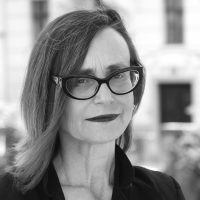
Marina Grzinic is a principal research associate at the Research Centre of the Slovenian Academy of Sciences and Arts (ZRC SAZU) in Ljubljana, Slovenia, where she is affiliated with the Institute of Philosophy. She holds a PhD in philosophy and is an artist with a forty-year career. She has been a professor at the Academy of Fine Arts Vienna, Austria, since 2003, in charge of the Studio of Conceptual Art (Post-Conceptual Art Practices) at the Institute of Fine Arts. Grzinic is the principal investigator of the Austrian Science Fund and Programm zur Entwicklung und Erschließung der Künste (FWF-PEEK) project “Conviviality as Potentiality” (2021–25). She was also the principal investigator of the FWF-PEEK project “Genealogy of Amnesia (Opposing Colonialism, Antisemitism and Turbo-Nationalism)” (2018–21). Her areas of expertise include contemporary philosophy, contemporary art, the study of coloniality and decoloniality, transfeminism, the analysis of racism, antisemitism, nationalism, and the study of memory and history in the context of resistance.

Amrita Gupta is an art historian, writer, educator, and editor who works across art education and cultural management. In 2002, she joined the Mohile Parikh Center (MPC), Mumbai, and became its program director in 2005, facilitating critical thinking by curating a wide range of innovative art education programs. She runs the website V-IDEO: Ideas worth Sharing, an archive of short videos on Indian artists for which MPC is the knowledge partner. She received an MFA in art history from Viswabharati University, Santiniketan 2002.
Her writings on modern and contemporary art have been published in anthologies, journals, and websites in India and internationally, and she has authored and edited art books for children. She was a visiting lecturer in art history at the Sir J. J. School of Art, Mumbai; a fellow at ARThink South Asia (ATSA); a research grantee from the India Foundation for the Arts, and curatorial advisor for Art1st Foundation, Mumbai. Her current art historical research is on Northeast India, framing the region as a “critical art geography” where one can attend to meanings that engage with global modernism and heterodox contemporaneity drawn through one’s own historical position. An essay from this research has been published in the book 20th Century Indian Art (Thames & Hudson, 2022). She is cofounder and executive editor of the independent e-journal, Partition Studies Quarterly which focuses on partition stories of Northeast India within the larger discourse of the partition in the subcontinent.
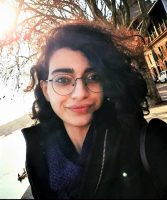
Delaram Hosseinioun was born and reared in Tehran, Iran, and seeks to reflect the voice of Persian women in creative and comparative narratives in spite of borders and restrictions. Delaram received an MA in literary criticism from the University of Exeter and another in cultural studies from KU Leuven University. Through her PhD project at Utrecht University, titled “Unveiling the Other: The Metamorphosis of Feminist Persian Art from the Mid-Twentieth Century to the Present Day,” Delaram draws from gender theories in French psychoanalysis, such as in the works of Hélène Cixous and Judith Butler, and continental philosophy, namely in the work of Mikhail Bakhtin and Jacques Derrida. Working with artists and scholars around the world, Delaram deciphers artworks as pictorial dialogues and as artists’ attempts to surpass sociocultural restrictions. The revelation and universality of the feminine voice frame her core vision. Delaram’s other passion is art journalism and interviewing artists beyond borders.

Brigitta Isabella is a researcher of art history, critical theories, and cultural studies. Her research trajectory revolves around the (im)mobility of artists and the (im)mobilization of art within the geopolitical and geoaesthetic terrains of transnational solidarity. By looking into the transnational traffic of artists, objects, and ideas, she reexamines the reciprocity between nationalism and internationalism and how artistic traces of Third World solidarity can play a discursive part in decentralizing global art history. She studied philosophy at Gadjah Mada University, Yogyakarta, Indonesia, and gained her MA in critical methodologies at King’s College, London. She is also a part of a research-action group called Kunci Study Forum & Collective and serves as the coeditor of Southeast of Now: Directions in Contemporary and Modern Art in Asia, a peer-reviewed journal published by NUS Press. She is a lecturer at the Faculty of Visual Arts in Indonesian Institute of the Arts, Yogyakarta.
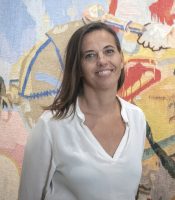
Żanna Komar, PhD, was born in Ukraine, lives in Poland, and is an art historian, theoretician of architecture, and exhibitions curator. She is a member of the academic staff at the Institute of European Heritage, part of the International Cultural Centre, Kraków, where she works as a content specialist. She specializes in urban studies, social and art history, and the theory and protection of cultural heritage. She is the author of numerous publications on the history of architecture and art, including the book Trzecie miasto Galicji. Stanisławów i jego architektura w okresie autonomii galicyjskiej (The third city of Galicia. Stanisławów and its architecture in the period of Galician autonomy, 2008). She writes about Art Nouveau, historicism, modernism, and contemporary art, and about totalitarian and modern architecture in present‑day Poland and Ukraine.
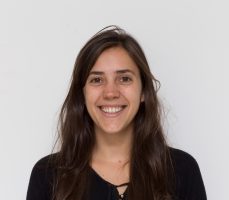
Larisa Mantovani holds a PhD in history from the Escuela Interdisciplinaria de Altos Estudios Sociales, Universidad Nacional de San Martín, Buenos Aires. She has a BA in art history and a teacher training degree in art history from Universidad de Buenos Aires. She is a postdoctoral fellow at the Research Center in Art and Heritage of the National Scientific and Technical Research Council (CIAP/UNSAM-CONICET). She works as an assistant professor of history of decorative arts I and II at the Universidad del Salvador. Both her dissertation and current postdoctoral research focus on applied arts and the links between art, education, and industry in Argentina in the first half of the twentieth century.

Thabang Monoa’s research interests involve art history, art criticism, visual culture, curatorial practice, and cultural studies. He completed his undergraduate studies at the Tshwane University of Technology and then went on to do a master’s degree in visual art at the Faculty of Art, Design and Architecture, University of Johannesburg. He later worked as an art historian in the faculty’s department of visual art. His doctoral study, which he undertook with the SARChI Chair in South African Art and Visual Culture, focused on the notion of Blackness in Afrofuturist aesthetics. Monoa is a member of the College Art Association (CAA) in the USA; a former council member of the South African Visual Art Historians (SAVAH); and is coconvenor of the Gerard Sekoto Winter/Summer School, which is administered through the Johannesburg Art Gallery. In his current capacity as a lecturer in Art History at the University of Cape Town’s Michealis School of Fine Art, Monoa continues to generate scholarly output concerning racial aesthetics, notions of futurity, and Black radical thought.

Haoxue Nie is an assistant professor at the School of Art and Humanities, Guangzhou Academy of Fine Arts. She holds a PhD in Western modern art history and theory from the China Academy of Art (2018). Her dissertation was published as a monograph in 2019 titled Beyond Boundaries: George Ault and Early Modern American Art. She was a recipient of the Getty Foundation grant for the 35th CIHA Congress (2019) and the international Travel Grant by Terra Foundation for American Art (2016).
Her research covers the first half of twentieth-century American art history, especially from the 1920s to the 1950s. Recently, she has been focusing on the visual ideology of cityscapes within this period and how they remained minor artworks in the mainstream of art history, as well as the concept of time, space, and subjectivity as formal, ideological, and psychological manifestations. The intertextuality among easel painting, modern photography, and films with urban themes in American modernism is also a part of her scholarly explorations.

Zuzanna Sarnecka is an assistant professor of art history at the University of Warsaw (Poland). She earned her PhD in history of art at the University of Cambridge (2017). She is the author of The Allure of Glazed Terracotta in Renaissance Italy (Brepols, 2021) and coeditor of The Agency of Things in Medieval and Early Modern Art. Materials, Power and Manipulation (Routledge, 2017) and The Materiality of Terracotta Sculpture in Early Modern Europe (Routledge, 2023). Her current research focuses on the adaptation of technique of tin-glazed earthenware from the Italian peninsula across Central Europe. In her work, she aims to construct more inclusive narratives through close investigation of microhistories that have long remained ignored, not because of the lack of sources, but because of the cult of masterpieces. She promotes multisensory perspective in studies of the arts of the past, as more immediately significant for the twenty-first-century beholder, than stylistic attributions and dating.

Jakub Stejskal is a MASH junior research group leader at the Department of Art History, Masaryk University, Brno, where he heads the research group Remote Access: Understanding Art from the Distant Past. He has held fellowship positions at eikones (University of Basel) and Freie Universität Berlin. He holds a PhD in aesthetics from Charles University, Prague. His research interests lie at the intersection of archaeology, art history, anthropology, and philosophical aesthetics. He is the author of Objects of Authority: A Postformalist Aesthetics (Routledge, 2022) and his work has appeared in Critical Inquiry, World Art, Journal of Aesthetics and Art Criticism, and RES: Anthropology and Aesthetics.

Cheryl Chelliah Thiruchelvam holds a PhD in art history and is currently attached to the Advertising Department, Faculty of Arts and Social Science at Universiti Tunku Abdul Rahman (UTAR), Malaysia. Her research interests are Hindu-Buddhist visual arts of the Southeast Asian region and to a lesser extent feminist studies. Her latest publication is a book chapter on the prevalence of the Ramayana epic in Malaysian visual arts for the book The Multivalence of an Epic: Retelling the Ramayana in South India and Southeast Asia (Manipal Universal Press, 2021). She also has a forthcoming coauthored essay entitled, “Tracing Indian Cultural Connections in Malaysia and Brunei: From Early Candis to Modern Art,” for the book Connected Histories of India and Southeast Asia: Icons, Narratives, Monuments that will be published by SAGE Publications India. Besides that, she is also interested in writing criticism, reviews, and commentary within the Malaysian art scene.
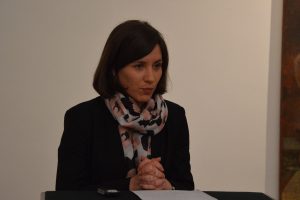
Tanja Trška is assistant professor at the Department of Art History, Faculty of Humanities and Social Sciences, University of Zagreb, Croatia, where she teaches courses on early modern art in Europe and present-day Croatia. She received her PhD in art history from the Scuola Normale Superiore in Pisa, Italy (joint supervision with the Faculty of Humanities and Social Sciences, University of Zagreb) in 2014. Her research interests center on early modern art and architecture, the exchange of cultural and artistic experiences between Italy and the eastern Adriatic coast, art patronage, and history of collections. She has collaborated on Croatian Science Foundation’s research project “Visualizing Nationhood: The Schiavoni/Illyrian Confraternities and Colleges in Italy and the Artistic Exchange with South East Europe (15th–18th centuries)” (2015–18) and is currently a team member of the research project “Provenance Research on Artwork in Zagreb Collections” (2020–24).
PARTICIPATING ALUMNI
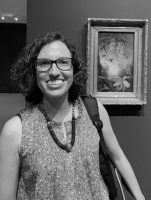
Patricia D. Meneses is an assistant professor of art history at the University of Campinas (Brazil). She earned her PhD in history of the visual arts at the University of Pisa (2009). She is the author of Baccio Pontelli a Roma. L’attività dell’architetto per Giuliano Della Rovere (Felici Editore, 2010) and editor of several books, such as Arte Não-Europeia: Conexões historiográficas a partir do Brasil (Estação Liberdade, 2020) and A imagen como experimento. Debates contemporâneos sobre o olhar (Milfontes, 2021). In 2019, she was Hans Jonas visiting professor at the University of Siegen, where she taught a course on “exotic” materials in art history. She is currently part of a Connecting Art Histories project sponsored by the Getty Foundation (“Teaching and Researching Non-European Art at Brazilian Universities”). Her research focuses on the connections between art, science, and ecology in the nineteenth century.

Natalia Moussienko is a leading research fellow at the Modern Art Research Institute of the National Academy of Arts of Ukraine (Kyiv). She is the author of numerous books and articles on art history, cultural diplomacy, cinema, and urbanism, including Art of Maidan (2016), Kyiv Art Space (2013), and Arts and Politics (2002). In 2016 the National Academy of Arts of Ukraine awarded Dr. Moussienko a gold medal for her achievements in cultural diplomacy. She was also awarded a Fulbright scholarship to conduct research at the Kennan Institute, Wilson Center, in Washington, DC (2011–12), and a Thesaurus Polonia Fellowship to study at the International Cultural Center in Krakow (2017 and 2022). Dr. Moussienko is an initiator and curator of Art of Maidan, a continuing project begun in 2014 to document the explosion of artistic creativity during the Revolution of Dignity in 2013–14 and a Russo-Ukrainian war premonition in it. Central to the project is a book and exhibition that has already been presented in nineteen locations in Ukraine, the United States, and Europe.

Shenouda Rizkalla Fahim Youssef is a trained archaeologist with extensive experience in archaeological fieldwork, database and collections management, and community outreach. His current research focus is on the museum practices in the Egyptian provinces, using the Akhenaton Museum in Minya, Egypt, as a case study. The museum, opening in 2023, will focus on the site of Tell el-Amarna, where the famous bust of Nefertiti, currently exhibited in the Egyptian Museum in Berlin, was found. The aims of the presentation are to analyze the archival resources for the history of the museum, develop community outreach programs by engaging the local population with the collection, and using this to develop avenues for future outreach activities. The results will be related to wider discussions of repatriation and postcolonial heritage management in Egypt.
Rizkalla received a PhD in Egyptology from Helwan University, Egypt. His research has been diverse, working on recording and translating Ptolemaic Period hieroglyphics, creating and executing site management strategies, and addressing the looting of archaeological sites. He has been a member of many excavations and site management missions in Egypt since 2012, has given numerous presentations and invited talks, and has written a number of academic reports and publications.

J. Kelechi Ugwuanyi is a senior lecturer in the department of archaeology and tourism, University of Nigeria, Nsukka. He is currently a postdoctoral research fellow at the Global Heritage Lab, Transdisciplinary Research Area: Present Pasts, University of Bonn, Germany. Kelechi has a PhD in heritage studies from the University of York, UK, and MA and BA in archaeology and tourism as well as a diploma in tourism and museum studies from the University of Nigeria. He is a coeditor of the Journal of African Cultural Heritage Studies and sits on the editorial board of the Studies in Contemporary and Historical Archaeology in Theory book series published by the Archaeopress. Kelechi’s research interests are critical heritage studies, museum, Indigenous knowledge systems, tourism, and contemporary archaeology. His current research revisits the originating communities of ethnographic archives collected from Africa during colonialism to reengage members of the descendant communities to understand their changing significance in the present.


